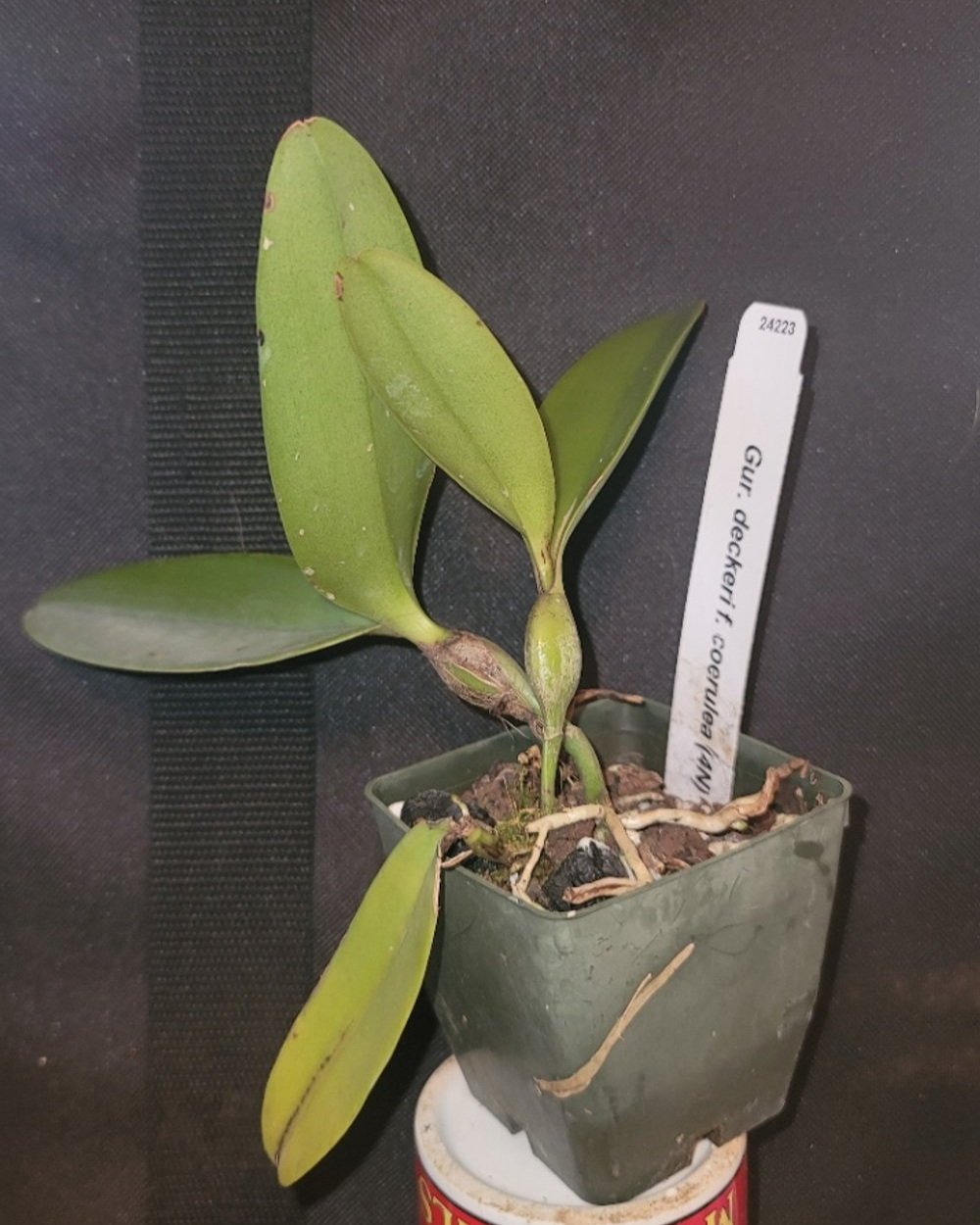Cattleya warscewiczii (f. flammea ‘Gigante de Cuite’ x tipo ‘1776’)
Cattleya warscewiczii was described by Heinrich Gustav Reichenbach in 1854 after Józef Warszewicz, a Polish botanist and orchid collector who discovered it in Colombia. A synonym, Cattleya gigas is still used colloquially, reflecting its massive flowers. It is one of the largest-flowered Cattleya species, it’s a cornerstone of orchid breeding and a favorite among collectors for its dramatic blooms. The species is native to Colombia and is found growing in humid montane forests or as a lithophyte on rocky slopes at elevation of 600-1,500 meters. Our plants are well grown, Near Blooming Size (NBS), and fully acclimated to outdoor growing in South Florida. We are expecting some to show drake-colored flares on the petals. Cattleya warscewiczii is a majestic species with colossal, fragrant blooms, embodying the grandeur of Cattleya orchids.
Appearance
Plant Structure:
A unifoliate epiphyte with tall, club-shaped pseudobulbs (20-50 cm long), each bearing one thick, leathery leaf (20-35 cm long, oblong to elliptic).
Growth habit is robust and upright, with a strong, architectural presence.
Flowers:
Size: Exceptionally large, 15-25 cm (6-10 inches) across, among the biggest in the Cattleya genus.
Color: Petals and sepals are typically rose-lavender to deep pinkish-purple, with a glossy finish. The lip is a darker magenta or reddish-purple, sometimes veined with purple, but always exhibiting two prominent yellow-colored eyes basally in the throat. Variants include alba (white) and semi-alba (white petals with colored lip) forms, though these are rarer.
Shape: Broad, rounded petals and sepals with a prominent, trumpet-shaped lip that’s ruffled and flared at the edges—a quintessential Cattleya silhouette.
Count: 3-7 flowers per inflorescence (sometimes up to 10 on exceptional plants), emerging from a terminal sheath on new growths.
Fragrance: Strongly fragrant, with a sweet, spicy, or citrusy scent often described as rich and complex, lingering in the air.
Cattleya warscewiczii (f. flammea ‘Gigante de Cuite’ x tipo ‘1776’)
Cattleya warscewiczii was described by Heinrich Gustav Reichenbach in 1854 after Józef Warszewicz, a Polish botanist and orchid collector who discovered it in Colombia. A synonym, Cattleya gigas is still used colloquially, reflecting its massive flowers. It is one of the largest-flowered Cattleya species, it’s a cornerstone of orchid breeding and a favorite among collectors for its dramatic blooms. The species is native to Colombia and is found growing in humid montane forests or as a lithophyte on rocky slopes at elevation of 600-1,500 meters. Our plants are well grown, Near Blooming Size (NBS), and fully acclimated to outdoor growing in South Florida. We are expecting some to show drake-colored flares on the petals. Cattleya warscewiczii is a majestic species with colossal, fragrant blooms, embodying the grandeur of Cattleya orchids.
Appearance
Plant Structure:
A unifoliate epiphyte with tall, club-shaped pseudobulbs (20-50 cm long), each bearing one thick, leathery leaf (20-35 cm long, oblong to elliptic).
Growth habit is robust and upright, with a strong, architectural presence.
Flowers:
Size: Exceptionally large, 15-25 cm (6-10 inches) across, among the biggest in the Cattleya genus.
Color: Petals and sepals are typically rose-lavender to deep pinkish-purple, with a glossy finish. The lip is a darker magenta or reddish-purple, sometimes veined with purple, but always exhibiting two prominent yellow-colored eyes basally in the throat. Variants include alba (white) and semi-alba (white petals with colored lip) forms, though these are rarer.
Shape: Broad, rounded petals and sepals with a prominent, trumpet-shaped lip that’s ruffled and flared at the edges—a quintessential Cattleya silhouette.
Count: 3-7 flowers per inflorescence (sometimes up to 10 on exceptional plants), emerging from a terminal sheath on new growths.
Fragrance: Strongly fragrant, with a sweet, spicy, or citrusy scent often described as rich and complex, lingering in the air.













